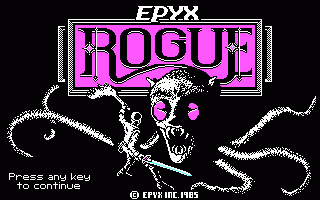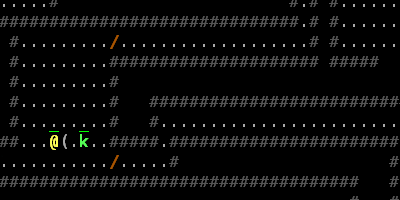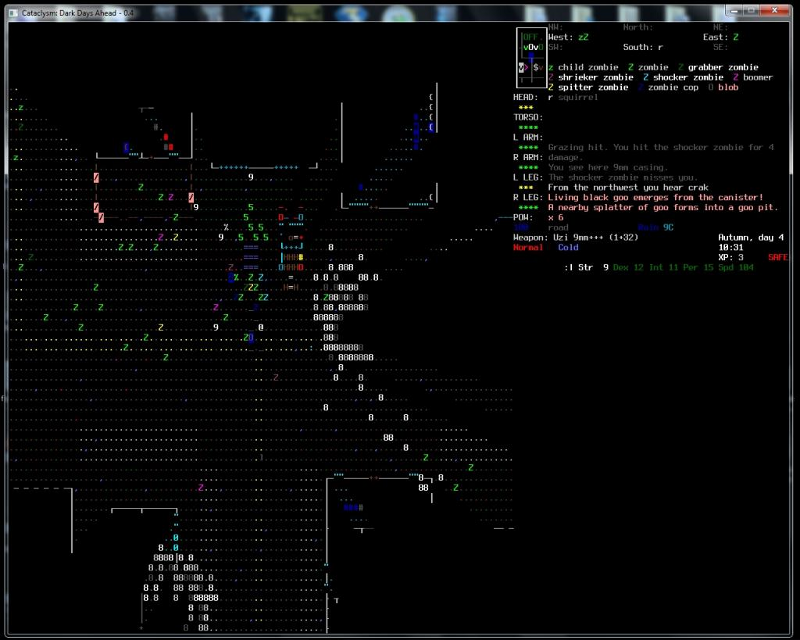In this multi-part series, Mr. Adequate takes a look at the roguelike genre and asks; what if someone with money made one?
Roguelikes. A genre steeped in misty and foreboding lore, a place where the truly hardcore dwell and where mastery of a single game can easily take years or even more. This is the genre of archaic acronyms like ToME and ADOM, inscrutable graphics that have until recently almost always been ASCII and nothing but, and most of all brutally unforgiving gameplay, which the fans of course love and relish. But why has the genre stayed in this niche? Where is the ‘big budget’ roguelike, or if not triple-A at least a medium level game with enough funding for animation and better UIs?
In order to explore this question, we need to know what we mean by the term roguelike, and my argument will also hinge on a look at the influences the genre has had on others, which is surprisingly varied. Roguelikes, as you may discern from the name, are games which are like Rogue. Released all the way back in 1980, before even Pike and I were born, Rogue wasn’t actually the first entry in the genre but was by far the most successful of the early contenders, and as this was an era when genre names were deeply unoriginal (remember “Doom-Clone”?) that was the name that stuck. Unlike the transition from Doom-clone to First Person Shooter, Roguelikes have never attained a more generic genre name, and so we still refer to a game that is now 36 years old to describe them. That said, note that the term “Procedural Death Labyrinths” or PDLs does exist even if it lacks much currency. For a good discussion of the genre’s name take a look at Tanya X. Short’s article on Gamasutra about the matter.

Once Rogue arrived, the genre started to gain traction and staples of the genre such as NetHack, Angband, and Ancient Domains of Mystery (ADoM) would drop through the 80s and 90s. These games shared certain qualities that made them obvious descendants of Rogue and which codified the genre, among which were;
– Dungeon crawling as the primary thing you are doing
– Built on a core of RPG elements, which is to say stats, levels, etc.
– Turn-based combat
– A typically vast array of skills, items, equipment, monsters, and so on
– Procedurally or randomly generated levels
– Very basic aesthetically, with ASCII graphics and sometimes no sound or music at all
– Permadeath, so if you die, you’re dead and that character is gone forever; you often have to reroll the world as well
Still, the genre has always had some flux in it and that has colored efforts to pin down exactly what a roguelike is. Even the most well-meaning and intelligent efforts such as the Berlin Interpretation run into controversy, especially due to the influence the genre is now having outside of the core canon of games that are almost universally agreed to fit into the genre.
Roguelikes developed in a unique situation that led to this rather uncommon combination of features. A large influence on their evolution was the university culture of the 80s, where the computer and still young Internet created a potent and hitherto unseen space for sharing ideas and information. The terminal computers of the day were not exactly powerhouses and this led to extremely compact programs when people started to make games. The genre can perhaps be thought of as a collection of preset rules which interact to create the procedural elements – those rules can be programmed far more efficiently than a comparable number of levels. This also explains the spartan aesthetic elements and ASCII graphics, as anything more was prohibitive in both computing demands and Internet capacity.

This created a culture of hobbyists, who were making these games because they enjoyed tinkering, to improve their skills, or to experiment with gameplay mechanics. In turn this meant a very open culture developed where the games were almost all freeware, where source code was shared, and where forks were actively encouraged. Indeed most of the older extant roguelikes trace their lineage to a different version of themselves. For instance, Rogue was cloned as a game called Hack, and further development on Hack is what morphed it into the seminal NetHack.
The upshot of this was in turn to make a genre that was dedicated to its vision, with developers dedicated to their games, and players dedicated to mastery. Roguelikes are uncommon in that they are explicitly very, very hard games most of the time, and many can take years of play to even complete once, nevermind to actually master. This is a point of great pride for essentially everyone in the community. The level of complexity in a game is often held up as a virtue and, when you really get to grips with something and discover the tremendously improbable ways you can combine skills and items to achieve victory, it’s easy to see why. The downside is that accessibility has suffered and until recently has been a low priority for developers. Just getting to grips with the basics of playing the game, the equivalent of learning to jump, fire a gun, and throw a grenade in Halo, can be daunting. In my experience this is not something that engenders much elitism among roguelike players, rather the attitude is “Yes, it’s a pain to learn, but it’s so worth it!” but nonetheless for a new player approaching the genre can be deeply intimidating.

Here, perhaps, we see the first true obstacle to the creation of a big-budget roguelike, as most gamers today are thought to want fairly short adventures of something between, say, eight and twenty hours. Those who want longer games still have their genres and some do very well (Consider Pillars of Eternity’s success for a prime example), but aside from the occasional Skyrim it’s just not what players as a whole are looking for. There’s almost certainly truth to this view, as only a small subset of people who play games really have the time or inclination to invest dozens of hours into games with any regularity, even though we probably all have the rare one that sucks us in far beyond what we expected.
Next time, we’ll look at trends in modern roguelikes and roguelites for some ideas of how a big-budget roguelike might stumble, and what it might do to bring in the masses.
Read Part 2 here and Part 3 here!
